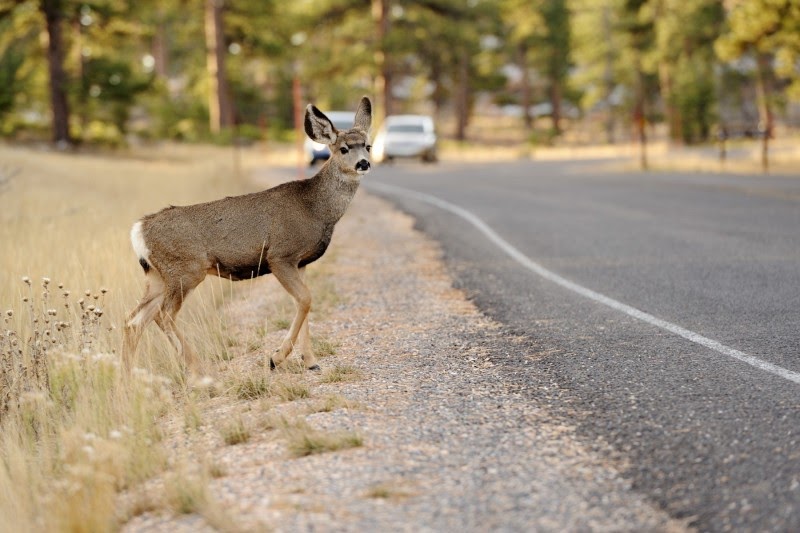Vehicle animal collisions are on the rise, according to State Farm, surpassing 2 million in its latest 12-month reporting period. According to its new data, taken from July 2020 to June of 2021 during the pandemic, animal collisions increased 7.2% from the prior reporting period. State Farm says an increase in speeding during the pandemic could be a factor in the increased number of animal vehicle collisions.
Top 5 States
State Farm lists the top 5 states in terms of animal collisions (as tallied by the number of insurance claims) as:
- Pennsylvania (with 166,404 estimated auto insurance claims filed for the entire industry),
- Michigan (132,387)
- Texas, where the estimated total number of animal strike claims (131,373) grew 19% since the previous period
- California, where the claims number (104,767) exploded by a 65% compared to the previous 12-month period
- North Carolina (98,409).
There is a notable increase in the percentage of crashes in both Texas and California. The most dangerous months for animal collisions are November, October, and December.
For another perspective, State Farm looked at the LIKELIHOOD of drivers hitting an animal, and the results are a little different. In this analysis, researchers looked at the number of drivers and compared it to the number of insurance claims filed.
- West Virginia leads the nation in this type of risk (1 in 37 chance),
- Montana, where the chances of hitting an animal (1 in 39) grew 17% since the previous period
- South Dakota (1 in 48)
- Michigan and
- Pennsylvania (both, with 1 in 54 chance).
Compare those numbers to the District of Columbia where drivers have a much lower probability of 1 in 569 of hitting an animal.
“Animal collisions remind us of the intrinsic risk that comes with driving a motor vehicle that has the potential of travelling very fast. Scanning the road while we drive and avoiding speeding, which has been very prevalent during the pandemic, can avoid and reduce the severity of all kind of car crashes, including those where pets or wild animals are involved,” said Operations Vice President Kimberly Sterling, Auto Claims teams lead at State Farm.
As for what types of animals are most involved, it's a varied list. Here are the statistics for the recent 12-month reporting period:
- Deer (an estimated 1.4 million)
- “Unidentified animals” (189,715)
- Rodents (110,976)
- Dogs (92,924)
- Raccoons (58,020).
For the calculation of the industry claim estimates, State Farm says it took into account the number of animal collisions claims it received, the company's market penetration (proprietary), and the number of licensed drivers in each state.
Tips to Prevent Animal Collisions
State Farm shares a list of 10 tips that could help you avoid a dangerous collision with an animal.:
- Slow down, especially if you see an animal close to the road.
- Stay alert. Scan the road for animals day and night, both in the countryside and in the city, and pay attention to “deer crossing” and other animal signs.
- Reduce distractions. Put the cell phone away. It can help you avoid injuring motorcyclists, bicyclists, pedestrians and animals too.
- Brake as necessary. If you can avoid hitting the animal, reduce your speed, honk your horn and tap your brakes to warn other drivers.
- Don't swerve. If a crash with an animal is inevitable, maintain control of your vehicle and don't veer off the road.
- Use high beams. Flicking your high beams on a deer may cause the animal to scurry away.
- Be aware of peak season. Deer crashes happen most often during October through December, which is hunting and mating season.
- Be mindful of meal time. Watch for animals on the road between dusk and dawn.
- Watch for herds. If you see one deer, there are probably more nearby.
- Speak with your State Farm agent about comprehensive coverage, which typically covers repairs for collisions with animals, after your deductible.
If you do hit an animal, make sure you and your passengers are ok. State Farm advises you to call 911 if the animal is large and still there after you hit it. Also make sure your vehicle is safe to drive after the incident. It's also a good idea to take photos (when it's safe to do so).
Source: State Farm.

